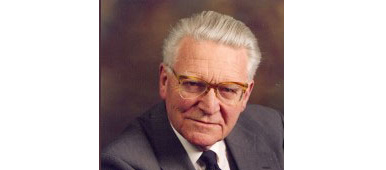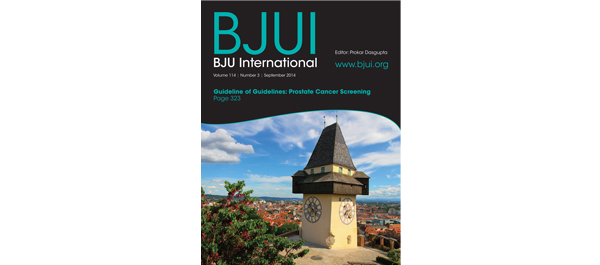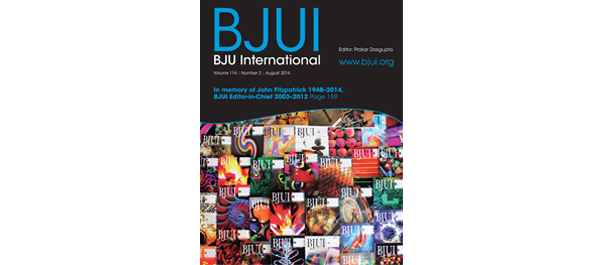
Richard Turner-Warwick
79 Comments
/
Richard Turner-Warwick CBE MSc, MCh (Oxon), DM.(Oxon), DSc.(Hon NY), FRCP, FRCS, FRCOG, FACS, FRACS (Hon), FACS (Hon)
Richard Turner-Warwick, now retired, but in good health, was one of the giants of British urology and is, quite literally, the Father of reconstructive urology, both nationally and internationally. A brilliant surgeon, teacher and writer, he managed to inspire a great many urologists around the world. He also restored quality of life to countless patients from many continents who…

Best of China 2014
Introduction
Recent years have witnessed the boom of Chinese urology. An increasing amount of high-quality research is carried out in China, which is reflected in increasing numbers of articles being accepted by prestigious journals like BJUI. As the president of the Chinese Urological Association, I believe that it is necessary to select provocative articles – focusing on better solutions to widely discussed clinical issues as well as latest achievements from Chinese laboratories – for readers…

Editorial: Neutrophil-to-lymphocyte ratio as a prognostic factor in upper tract urothelial cancer
The immune system response is critical to cancer development, treatment and progression. Dalpiaz et al. [1]. show that patients with a higher neutrophil-to-lymphocyte ratio (NLR) have a higher cancer-specific and overall mortality when undergoing radical nephroureterectomy for upper tract urothelial cell cancer (UTUC). The study is the first and largest one to evaluate the impact of preoperative NLR on UTUC and proposes its incorporation into our risk assessment tools as an independent predictor…

Guideline of Guidelines
Many of us have developed an addiction to sports this summer. The World Cup football in Brazil with its continuous party spirit, the lush green lawns of Wimbledon and then the Test series between India and England. Our Web Editor could not contain himself:
Amidst all the fun and excitement, three important pieces of news are highlighted here:
I requested our Associate Editor Stacy Loeb, who has a strong background in statistical methodology and health services research, to launch…

Editorial: The importance of knowing testosterone levels in patients with prostate cancer
The paper by San Francisco et al. [1] in this issue of BJUI, reviews 154 patients with prostate cancer who were included in an active surveillance cohort. In all, 54 (35%) progressed to active treatment. Men who had disease reclassification had significantly lower free testosterone than those who were not reclassified. They concluded that on multivariate analysis, free testosterone and a family history of prostate cancer were independent predictors of disease reclassification. The authors acknowledge…

SoMe Guidelines in Urology: #urojc August 2014 summary
The August 2014 twitter-based international urology journal club (#urojc) took an introspective look at the newly published European Association of Urology recommendations on the appropriate use of social media.
This month's article hit close to home as a panel of international urologists (many who are active on Twitter and #urojc) attempted to bring social media (SoMe) to the general public of urologists with some basic guidelines on effective, safe and honest communication. The article described…

Editorial: Unveiling the surgical risk associated with neoadjuvant chemotherapy in bladder cancer
In this issue of BJU International, Johnson et al. [1] examine the association between neoadjuvant chemotherapy (NAC) for bladder cancer and 30-day morbidity related to radical cystectomy (RC). Level 1 evidence supports use of cisplatin-based NAC for bladder cancer; a meta-analysis of 11 randomised trials including 3005 patients who received NAC found a 5% absolute increase in 5-year overall survival and a 9% absolute increase in 5-year disease-free survival compared with RC alone [2]. Despite…

Social Media and Twitter from a Resident’s Perspective
“Happy Twitterversary! You’ve just turned 1”
Really? As I stared bleary eyed, post-call at the email in my inbox I couldn’t believe what an ingenious idea such an email was (how many of us remember the day we started using Twitter?) and that another year as a resident (albeit on Twitter) was behind me.
No question I was a “slow adapter” to social media, in particular Twitter – it was too reactionary, I was too busy, it would take up too much time. I can’t remember how or why…

Editorial: Pushing the robot-assisted prostatectomy envelope – to the safety limits? Better outcomes
The present article by Lim et al. [1] describing the new technique for robot-assisted radical prostatectomy is provocative. It really does highlight the dramatic improvement in outcomes of prostate cancer surgery for men over the last 25 years. What used to be a 3-week hospital stay with a 50% incontinence rate and a 100% impotence rate [2, 3] now becomes a day case with a high likelihood of excellent urinary control early after surgery and a fair potential for potency preservation. Twenty-five…

Do we really need to show a survival benefit to justify ePLND in prostate cancer?
Whilst extended pelvic lymphadenectomy has become part of standard care in select patients undergoing radical prostatectomy at some centres, it is not universally accepted or performed and remains controversial, so why is this? The most common reasons cited for not performing a node dissection, or at least an extended node dissection, include lack of proven therapeutic benefit and the increased operative time and risk of complications. But do we really need to show a survival benefit to accept the…
